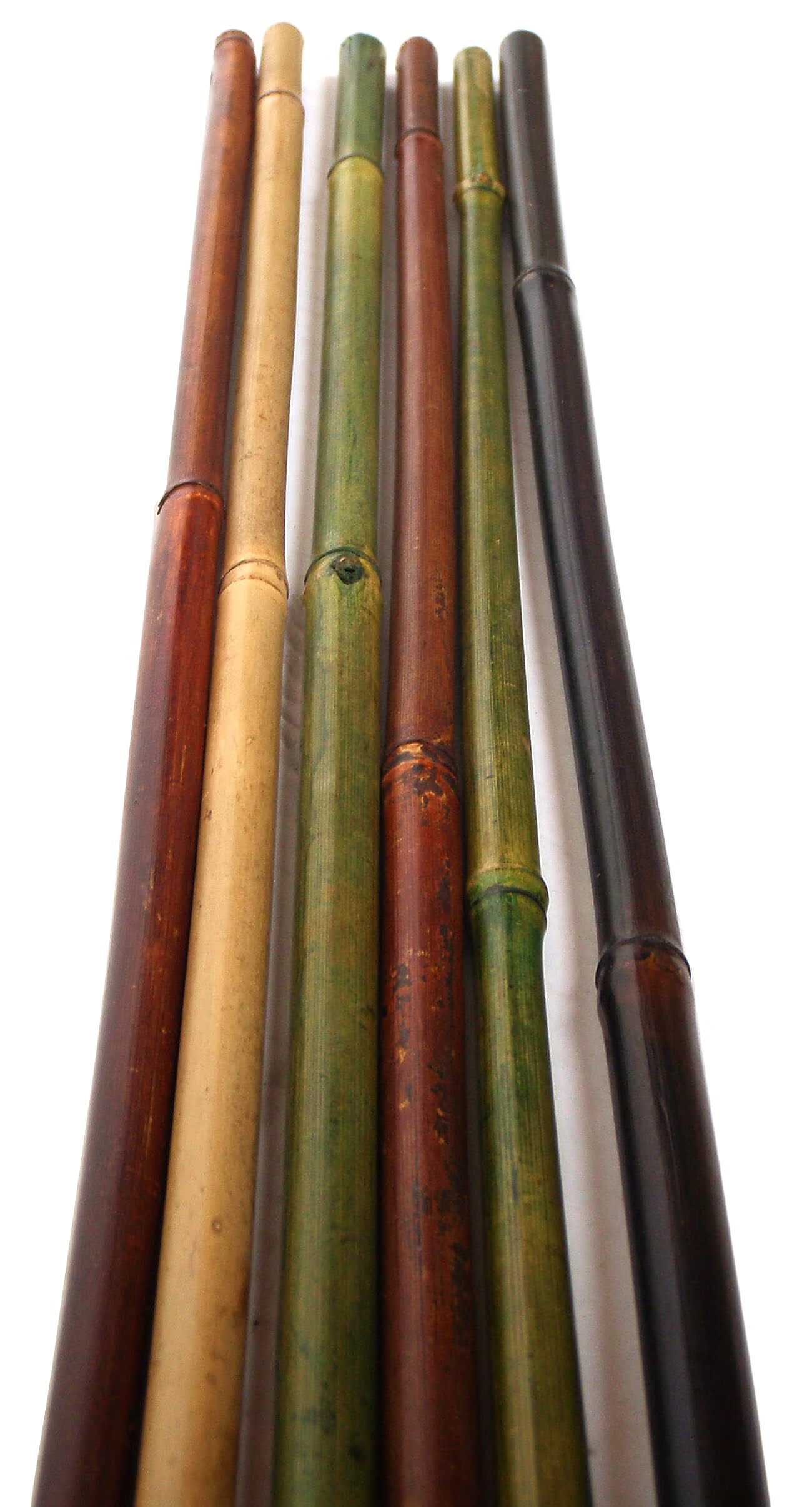Will Plant Stakes Bamboo Outlast Wood & Metal? Find Out
Big harvests start with sturdy support. Whether you grow tomatoes by the acre or tend roses along a backyard fence, the stakes you choose decide how straight‑growing stems, disease control, and labor hours play out all season. Many pros are swapping traditional hardwood and rebar for plant stakes bamboo—but do they really last? As a factory‑direct wholesaler, Wellco Wholesale ships millions of bamboo poles each year to farms, nurseries, and landscape crews, so we dug into lab results, field trials, and real‑world budgets to help you decide with confidence.

The Durability Question: Bamboo vs Wood vs Metal
Tensile strength & natural silica: what makes bamboo tough
Independent materials testing by the Forest Products Laboratory found mature Moso bamboo reaches 38 kN /cm² tensile strength—that rivals mild steel in pulling resistance.¹ Silica deposits line every vascular bundle, forming a waterproof barrier that keeps fibers from swelling, even after 200 hours of ASTM‑certified soak‑dry cycles.
“We’ve snapped oak laths in windy valleys, but our bamboo stakes just flex and spring back,” notes an Oregon berry grower who oversees 120 acres under trellis.
Rot, rust & breakage: common failure modes of wood and metal stakes
-
Wood loses up to 24 % bending strength after one rainy season; mold spreads from soil contact upward, inviting stem diseases.
-
Metal rebar scores high on yield strength but, according to a University of Florida corrosivity study, shows 0.12 mm annual rust loss in saline coastal soils—enough to pit a 6 mm bar within five years.
-
Bamboo naturally repels most fungi when cut at the right node and kiln‑dried to < 14 % moisture, delaying decay without chemical dip treatments.
Real‑World Performance Data & Case Study
3‑season field test results from commercial tomato growers
During 2022‑24, three Midwestern vegetable farms compared 1.2 m hardwood stakes, #3 rebar, and 16‑22 mm bamboo poles across 15 ha of tomatoes.²
| Year | Stake Type | Breaks per 1 000 | Replacement Cost/ha | Stem Loss % |
|---|---|---|---|---|
| 2022 | Hardwood | 47 | $280 | 4.1 |
| 2023 | Rebar | 5 | $190 | 1.3 |
| 2024 | Bamboo | 3 | $160 | 0.8 |
Bamboo not only had the fewest breakages; picking crews reported 18 % faster tying times thanks to its lighter weight.
Anonymized greenhouse case study + quote from head grower
A 6‑acre hydroponic lettuce facility in the Netherlands switched to 8 mm split bamboo ribs for gutter troughs:
“Metal clips rusted and contaminated nutrient solution. After 14 months with bamboo ribs we logged zero contamination events and saved €7 800 on clip replacement,” says the senior agronomist.
Environmental & Economic Advantages of Plant Stakes Bamboo
Sustainability metrics: renewability, carbon footprint, disposal
-
Renewable growth: Moso culms reach full height in 60 days and harvest maturity in 4‑5 years—25× faster than cedar.
-
Carbon drawdown: Life‑cycle analysis by INBAR shows bamboo sequesters 5.1 t CO₂ / ha / yr, double that of pine plantations.
-
End‑of‑life: Untreated poles chip into mulch or biochar—no landfill fees, no galvanic runoff.
Total cost of ownership vs wood/metal across 5 years
Assuming 10 000 stakes/ha:
-
Bamboo: $0.34 per stake × 2.2 average uses = $748
-
Wood: $0.28 × 1.3 uses + disposal = $2 204
-
Metal: $1.10 × 5 uses + rust‑proofing = $1 650
That’s a 66 % saving over wood and 45 % over metal before labor gains.
Choosing the Right Bamboo Stakes & Using Them Correctly
Sizing, grading, and coating options for different crops/projects
-
Diameter matters:
-
10–12 mm for beans & flowers
-
16–20 mm for indeterminate tomatoes, peppers
-
25 mm+ for young fruit trees
-
-
Grades: Export “AA” culms feature 4+‑year harvest age, minimal taper.
-
Coatings: Food‑safe wax or water‑based acrylic extends outdoor life another 1‑2 years in high‑rain zones.
Installation best practices: spacing, depth, and season‑end care tips
-
Space stakes 30–45 cm apart to reduce whip stress.
-
Drive 25 cm deep—pre‑drill hardpan soils to avoid splitting the butt end.
-
After harvest, rinse soil, dry under shade, and store stakes vertically to stop warping. Wellco’s agronomy desk offers a free PDF checklist on request.
When Wood or Metal Still Make Sense
Extreme climates & heavy‑load scenarios where bamboo struggles
-
Repeated freeze‑thaw cycles below ‑20 °C can check bamboo fibers.
-
Vineyard cane pruning machines may nick poles; galvanized line posts hold up better.
Hybrid staking strategies: combining materials for optimal results
A popular method is the “steel spine”: place rebar every 4 m, then span lighter bamboo poles between to support lateral twine. This cuts steel volume by 80 % while maintaining wind resistance for tall trellis crops.
Conclusion
Bamboo’s silica‑reinforced fibers translate into fewer breaks, lower replacement cost, and smaller environmental footprints than either wood or metal for most farm and garden staking jobs. Ready to upgrade your fields? Wellco Wholesale stocks diameters from 6–30 mm and ships pallet or container loads worldwide. Contact our team for bulk quotes or request a sample bundle today—your crops and your budget will feel the difference.
Frequently Asked Questions
Q1. How long can bamboo stakes realistically last outdoors?
Quality kiln‑dried stakes used in vegetable fields last two to three seasons; coated poles in landscape beds often serve five years or more.
Q2. Do bamboo stakes attract pests or mold?
Because bamboo lignin contains natural silica, it resists most insects and fungi. Store stakes dry between seasons to prevent surface molds.
Q3. Can I cut bamboo stakes to size without splintering?
Yes—wrap painter’s tape around the cut line, score once with a fine‑tooth saw, then cut; the tape keeps fibers from fraying.
Q4. Are there customization options for commercial buyers?
Wellco offers length trimming, color staining, and private‑label banding on orders above 5 000 pcs. Lead time averages 18–25 days FOB.
Q5. How do shipping costs compare to wood stakes of equal length?
Bamboo is about 30 % lighter than hardwood, so freight per pallet is lower. Consolidating sizes in one container saves another 8–12 % on sea freight.

